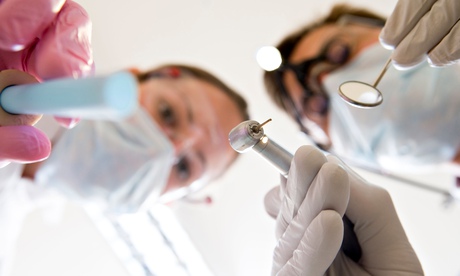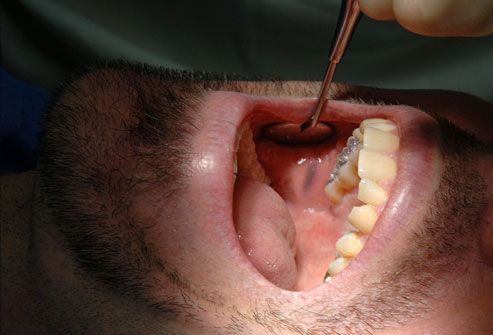 |
| Image Source: nytimes.com |
Terry O’Brien, 73, a retired administrative assistant in Billerica, Mass., recently had to make a tough decision about her dental care.
“I always took care of my teeth,” she said. But even so, she was told she needed a crown — an artificial cap — at a cost of about $2,000.
Since she and her husband lack dental coverage, she opted for a less expensive filling. She worries, however, about how she will fund dental care long term. “I’ll make 100, I bet,” she said. “But I wonder how long my teeth will last.”
Older Americans face such situations often, because many people over age 65 lack dental insurance. Only about 10 percent of retirees have dental benefits from their former employer, according to Oral Health America, a nonprofit advocacy group.
And 22 percent of Medicare beneficiaries had not seen a dentist in five years, the Kaiser Family Foundation reported in 2012. The main factor is the cost of care, said Tricia Neuman, a Medicare policy expert with the foundation.
Traditional Medicare, the federal health program for older adults and people with disabilities, doesn’t cover routine dental care or dentures. Some Medicare managed care plans offer coverage, but it is often limited to preventive care like cleanings. Medicaid, the federal-state program for low-income people, may cover some dental care for adults, but benefits vary by state. Individual plans are available, but they typically cap payments at low levels and may not cover any advanced treatments, like implants to replace lost teeth.
That means most older Americans must pay for dental care out of their pockets.
According to 2013 data from the American Dental Association, which surveyed private dentists, the average cost of a basic examination is about $45, while a cleaning is $85. X-rays are another $27; a tooth-colored filling is $149, while a silver filling is about $125. Costs vary widely, however, depending on the market.
Artificial implants average about $4,000 per tooth, the A.D.A. found. But the bill can be much higher, after adding anesthesia and related treatments like bone grafts. Implants involve inserting a metal screw into the jawbone to serve as the foundation for a replacement crown.
Implants are an economic impossibility for some patients, said Beth Truett, chief executive of Oral Health America. But, “If they can afford it, they are a great solution to maintaining not only that tooth, but the teeth around it.” A full set of teeth for an adult is 28 (32 if you still have your wisdom teeth), and you should have at least 22 teeth to eat properly, she said. Once a tooth is lost, nearby teeth bear additional strain and it gets more difficult to chew; that leads to a cycle of poor nutrition and further tooth loss, she said.
Ed Decker, 69, a retired hospital pharmacist in Ashland, Mass., said he had poor dental health his entire life and had budgeted to make dental care a priority. “I think my family was born with marshmallows instead of teeth,” he said. Ultimately, he lost so many teeth he couldn’t chew, and had 10 implants, at a total cost of about $50,000. He was able to pay for it, he said, because of successful investments recommended by his financial adviser. “When you put in an implant, it’s like having a natural tooth,” he said.
Continue reading the main story Continue reading the main story
Continue reading the main story
Judith Jones, a professor at Boston University Henry M. Goldman School of Dental Medicine and an authority on dental care for older people, recommends that after age 65, the bare minimum level of care needed is a professional examination and cleaning at least once a year. Poor mouth health has been linked to other ailments, like heart disease and diabetes.
Patients should brush at least twice a day for two minutes, she said. If older people aren’t able to do it themselves, family members or caregivers should assist them. Basic mouth hygiene, including daily flossing, is important to maintain healthy gums and remove tartar and plaque, which traps bacteria and can lead to infections.
People also need to be aware of the possibility of being pressured into unnecessary treatment. To find a reputable dentist, you may want to ask your doctor or your friends for a referral. And be skeptical of treatment that sounds overly aggressive. “If you go in and they want to replace every filling in your head, you should get a second opinion,” said Athena Papas, co-head of geriatric dentistry at the Tufts University School of Dental Medicine.
However, she noted, patients who haven’t been to the dentist for several years may have a real need for restoration work, particularly if they are on multiple prescriptions. Some medications can cause a reduction in saliva, which can promote development of cavities.
One way to limit costs for replacement teeth is to have implants on the lower jaw, and use dentures to replace upper teeth, said Dr. Papas; it’s easier to keep upper dentures in place.
Older adults on tight budgets generally should avoid cosmetic treatments like teeth whitening, dentists say. But many dismiss the idea that older people don’t need to spend on oral care because they are near the end of their lives. Patients who are in their 80s, but who are fit and have a healthy lifestyle, can benefit from technologically advanced dental care “because it is estimated that they will have another 10-15 years of life span,” Helena Tapias-Perdigón, an assistant professor at the Baylor College of Dentistry at Texas A&M Health Science Center, said in an email.
Some dental schools offer discounted treatment, although some require deposits and may have waiting lists. The American Dental Association lists accredited schools on its website.
You can also ask dentists if they offer a payment plan. But read the fine print of any discount program, said Jim Quiggle, a spokesman for the nonprofit Coalition Against Insurance Fraud, since some programs offer little in the way of true savings.
Dr. Domenick Coletti, D.D.S., is a nationally recognized surgeon and is one of only 60 oral and maxillofacial surgeons inducted into the prestigious American College of Surgeons. Know more about the surgeries he performs on this website.







